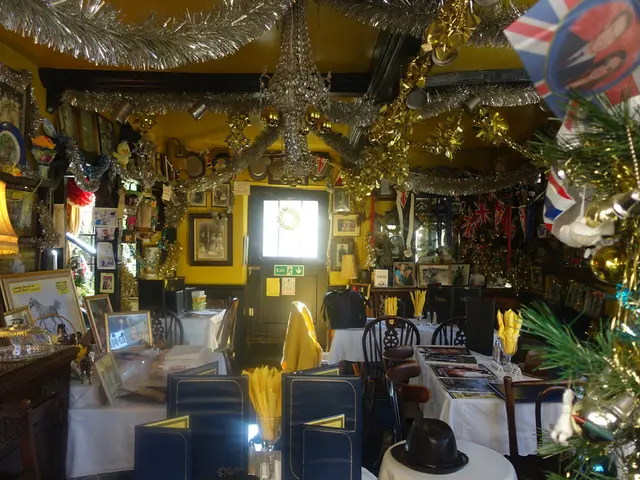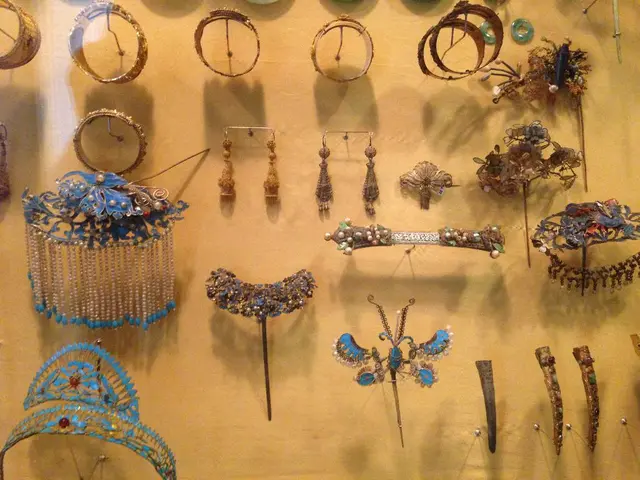Refreshed Take on Timeless Colonial Design: Discover the Secrets to Achieving the Trend
Modernizing the Classic: Embracing the Modern Colonial Style
In the world of design, the modern colonial style took the second spot in popularity last year, according to Google's trending search data. This design style, a charming blend of the old and the new, offers a refreshing take on the traditional colonial aesthetic.
Elizabeth Drake, owner and principal designer of Elizabeth Drake Interiors, explains, "Modern colonial style is all about keeping the classic architectural elements of a traditional home while integrating modern features and amenities. It’s about striking a balance between the old and the new, maintaining the essence of the colonial style while catering to contemporary lifestyles."
Marcella Domonkos, owner and principal designer of The MD Design Co., echoes Drake's thoughts, stating, "Modern colonial interior style is a nod to traditional home elements with a fresh, modern, and more functional design for everyday living."
Cheryl Clendenon, owner and creative chief of In Detail Interiors, adds, "Modern colonial style isn’t as stuffy as its traditional ancestors, focusing on creating a casual and comfortable space. It’s more about a transitional style that blends the best of traditional and modern designs."
Modern vs. Colonial Homes
The original colonial homes of the American colonies in the 17th and 18th centuries were simple, unfitted, and rustic. Later, inspired by the American centennial in 1876, 'colonial revival' homes emerged with interiors more formal and highly decorated than their predecessor.

Today's modern colonial is likely influenced by the current swing from sleek interiors towards more traditional styles, but tailored to meet contemporary lifestyles.
Key Elements of Modern Colonial Style
The modern colonial style sets itself apart from traditional colonial design in several ways. According to Drake, "Modern colonial style combines the elegance of traditional colonial design with a more contemporary, minimalist twist."
This modernization impacts everything from decor and furnishings to floor plans. However, it’s essential not to lean too modern, advises Domonkos, "Avoid all-white rooms, modern trim work, boxy designs, and overly neutral palettes. Modern colonial should still have the charm and sophistication of traditional design, but with a timeless nature to design decisions, and a comfortable feeling overall."
1. Pared-Back Furnishings and Symmetrical Arrangements
In line with the simplicity of early colonial homes, pared-back furnishings are integral to the modern colonial style. Traditional colonial furniture, characterized by large profiles, rolled arms, and T-cushions, is replaced with furniture featuring clean lines, elegant yet avoiding overly intricate details. Symmetry is another nod to traditional colonial architecture, influencing modern colonial interiors through balanced furniture arrangements.

2. Fresh Patterns and Upholstery
In contrast to the billowy and embellished accents typical of traditional colonial design, modern colonial embraces lighter upholstery, rich leather elements, and contemporary spins on traditional patterns. Aim for cleaner lines in window treatment designs with lesser fullness and a simpler pinch pleat style. Rugs and wallpapers follow a similar approach, opting for bolder colors or burn-out patterns and classic patterns in larger scales.
3. Earth-Tone Colors
Unlike the deep blues, greens, golds, and reds found in traditional colonial palettes, modern colonial spaces embrace warm, neutral, natural, and earthy colors. Stick to a neutral color palette, whites, grays, soft blues, and balance it with natural wood tones like walnut or mahogany.
4. Wood Accents
Wood accents remain a signature element of colonial interiors, regardless of the era. While early colonial interiors featured rustic woods and beams, the colonial revival brought refinement to wood elements, including ornately shaped furniture and trim work. Today, that elevated approach to using wood remains, but primarily for millwork and accents, not furniture.
5. Trimwork
Trimwork is an important feature for the modern colonial interior, so don’t forgo baseboards and window casing. Adding crown molding or a chair rail offers a deeper connection to the colonial aesthetic. A stairwell with traditional trim makes an eye-catching and style-appropriate focal point. For modern colonial casework and trim, keep lines cleaner and simpler, and incorporate lighter finishes and colors.
6. Natural Light
To create a bright and inviting modern colonial space, prioritize natural light. In contrast to traditional colonial design, which featured closed-off rooms and smaller, fewer windows, contemporary homes open up the interior with larger windows and more open floor plans to maximize sunlight.
Embrace the timeless charm of the modern colonial style while catering to contemporary lifestyles using these key elements. For more design inspiration, why not test out some of the best wallpapers available in 2025 and make a statement in your modern colonial home?
- In the realm of home trends, the modern colonial style emerged as the second most popular design last year, based on Google's search data.
- Modern colonial style, a unique blend of traditional charm and contemporary design, offers a refreshing take on the classic colonial aesthetic.
- Elizabeth Drake, a principal designer, explains that modern colonial design maintains the structural elements of traditional homes while incorporating modern features and amenities.
- The modern colonial interior style is a modern and more functional interpretation of classic home elements, according to Marcella Domonkos, another principal designer.
- Cheryl Clendenon, a creative chief, adds that modern colonial style focuses on creating a casual and comfortable space, unlike its more formal traditional ancestors.
- The original colonial homes from the 17th and 18th centuries were simple and unfitted, contrasting with the formal and highly decorated colonial revival homes that emerged later.
- Today's modern colonial homes are influenced by the current shift towards traditional designs while still catering to contemporary lifestyles, and they are characterized by pared-back furnishings, fresh patterns, earth-tone colors, wood accents, trimwork, and an emphasis on natural light.







